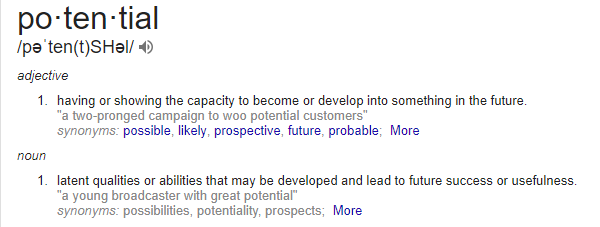What is the best strategy to develop an effective leadership pipeline? It speaks to the obvious that the development of the next generation of leaders is vital to the future growth of the organization and its competitive advantage.
But let’s ask ourselves if talent development is only about identifying and training future leaders. What about everyone else in the organization?
The reality that we see with high potential programs are:
- There are stars. There are also strong performers, reliable contributors, underachievers, and the people we wish would just go away.
- There are favorites. These are the wily coyotes who have built their support through political acumen
- There are agendas. Managers will aggressively push their succession eligible candidates because of future advantages and gains that will come to them.
- There are limited funds. HR leaders, after fighting tooth and nail for every budget dollar dedicated to training and development, now have to decide how to allocate their limited dollars effectively.
High potential development programs were developed to cost-effectively build a talent pipeline and create a program that will nurture the leaders of tomorrow. The hi-po program sounds great in concept except there were a couple of bumps in the road when it came to execution.
- How do you encourage and incentivize all of your employees who were not identified as high potentials?
- Why should all of the development spending (executive coaching and training) be spent on the select few who have been labeled high potential?
- How do you define potential?
- How are high potential selected in the first place?
- What does it take to become a high potential? Why won’t my manager talk to me about what it will take for me to be considered?
What is the net result of all of this?
According to the Hogan white paper The Politics of Potential:
In a survey of more than 450 organizations by AMA Enterprise, only 14% of employees regarded their company’s high-potential program as fair.
24% described their company’s high-potential program as “flawed, but well-intentioned,” and another 34% viewed it as “partial and political.”
According to the same survey, the negativity most people feel toward high-potential programs has led more than 42% of companies to avoid using the term “high potentials” entirely, especially when communicating to employees.
The survey results create an interesting dilemma for HR leadership – how do you identify and nurture future leaders without disengaging the rest of the workforce?
IMHO (forgive me – I just wanted to show that I am “down” with the current texting terms), I believe that maybe we should try to treat every employee as a high potential.
Let’s start with what is potential?

Potential is about possibilities; it is about learning to be more useful; it is about providing a future that will lead to greater success. I would have to ask why this should be only for the select few.
Tomas Chamorro-Premuzic and Gillian Pillans said this in a Corporate Research Forum, March 2016 white paper.
“ Assessing potential is about probabilities, not absolutes or guarantees . It is about uncovering the factors that predict future success, within the specific context, culture, and strategy of your organization, and making calculated bets on individuals who are objectively judged to meet those criteria”.
According to the Hogan Politics of Potential report
One of the biggest struggles most companies face is presenting a clear definition of potential.
Potential for what?
High-potential programs are intended to identify individuals with leadership potential, but most often they end up mistaking current performance for leadership potential, or favoring individuals who are talented at organizational politics.
These characteristics are critical to helping individuals climb the corporate ladder. High potential candidates without these characteristics are unlikely to ever play the game enough to get ahead.
However, these characteristics aren’t enough to succeed at the top, which is why performance appraisals and supervisor nominations don’t work and why 46% of leaders fail to meet business objectives in a new role.
Only focusing on emerging leaders can cause organizations to miss the individuals in your organization who actually have the potential to succeed as leaders.
Some things that should be considered:
Maybe it is time to rethink our talent development strategies and regard everyone as having potential. No, I do not mean the everyone gets a trophy type program. I also do not mean dismantling leadership development programs. Instead, can programs and strategies be developed that look at how every employee can be developed to add greater value to the organization?
A closer examination (in many cases) is needed on how potential is defined. While many organizations are moving to more data-driven criteria, the primary means of identifying potential is past performance, supervisor nominations and performance appraisals.
A survey found 74% of companies identify high potentials based on performance appraisals, and 68.5% based on recommendations from management. Of those recommendations, 55% said senior executives played the biggest role, followed by managers (52%) directors (44%), and supervisors (33%). ( Politics of Potential – Hogan).
High performance does not equal high potential – especially when it comes moving people to higher levels of organizational responsibility. This mismatch is where the implementation of solid competency models can help drive better identification and selection.
While everyone may not be a leader, everyone has potential to grow and contribute more.
Patrick Lynch is the President of CMP - Southeast, a talent and transition firm in the business of developing people and organizations across the full talent lifecycle – from executive search and leadership development to organization development and outplacement/career transition support.



